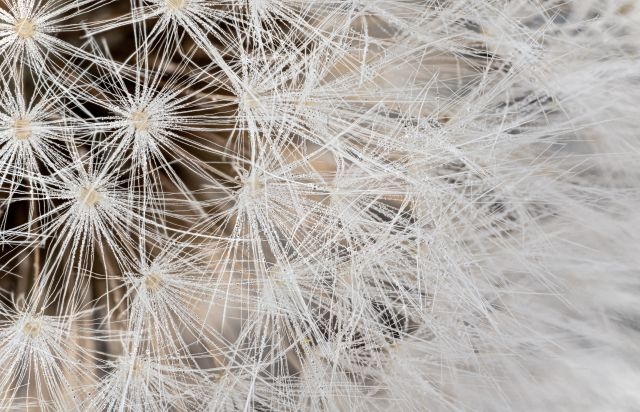
A dress made of spider silk, a handbag made of mushroom, or sneakers made of sugar cane or seaweed… Imagine the dressing room of tomorrow, more like a natural history museum than a wardrobe. And yet, this is what the fashion industry is currently concocting, in search of fibers that are more respectful of the environment and animal welfare, two criteria that consumers are now paying attention to before going to the checkout.
And if some materials, sometimes as old as the world, are coming back to the forefront like linen and hemp for example, others are now considered as new generation fibers, fruits of partnerships with start-ups specialized in biotechnologies that turn to nature’s riches to transform them into innovative and sustainable materials. Here’s a look at some unusual materials that are likely to make their way into your wardrobe in the next few years.
The spider’s web, an alternative to silk
Animal lovers, don’t panic! We’re not talking about making our eight-legged friends work seven days a week to make the sweaters and other clothes of tomorrow. Secreted by the spider’s sericigene glands, silk threads are not originally used to make clothes, but to allow these small hairy creatures to move around, build their shelters, or create traps for their prey. However, scientists have studied the mechanism and DNA structure of this silk in order to divert it from its initial function and to design it in industrial quantities.
Two companies, Bolt Threads and AMSilk, have both succeeded in producing laboratory silk inspired by that made by spiders. With Microsilk, Bolt Threads has already partnered with Stella McCartney and adidas to design a tennis dress from this next-generation silk, while AMSilk, with Biosteel Fiber, has already created several fashion pieces, shoes, and accessories. Even more impressive, The North Face has trusted Spiber’s innovative silk to make an entire down jacket, the Moon Parka. Strong and durable, this silk could quickly become a wardrobe staple.
Expired milk, a biodegradable fiber
Incredible, but true! Expired milk could also soon land in our wardrobes. Fibers based on casein, the milk protein, are far from being new, since they are due to an Italian chemist and engineer during the inter-war period, but they have recently returned to the forefront in order to reduce the impact of fashion on the environment. At the time, the discovery was intended to replace wool, today we find it (already) in the composition of T-shirts or lingerie.
One stone, two blows. If the process set up in the 1930s has been improved, it remains the same. It is about using expired milk to transform it into a natural and biodegradable textile. One of the best known in the world is the QMilk textile, created by the German entrepreneur Anke Domaske, who was looking for natural fibers for her father-in-law who was suffering from cancer. But since then, other brands have taken the plunge, like Germaine des Prés, which offers panties and nighties made of milk fiber, guaranteed antibacterial and 100% biodegradable.
Read the full article on Fashion Network
